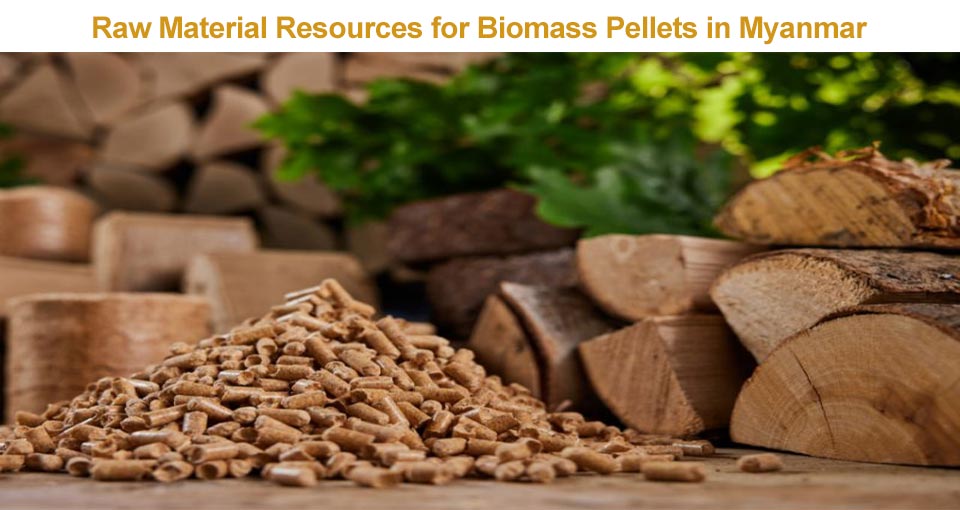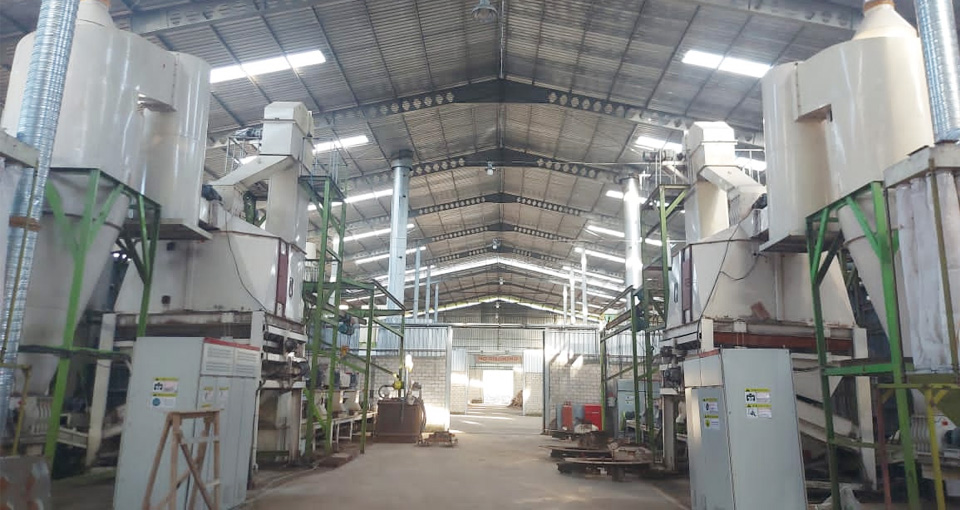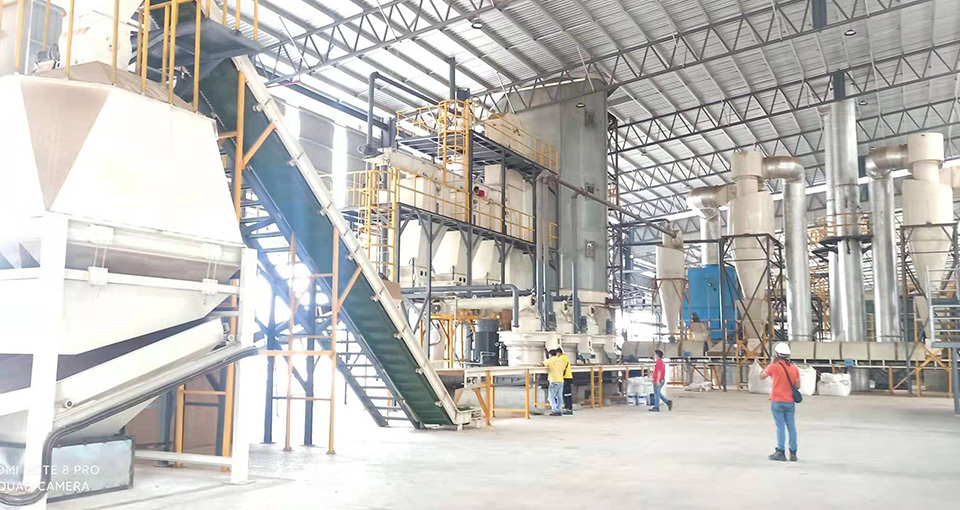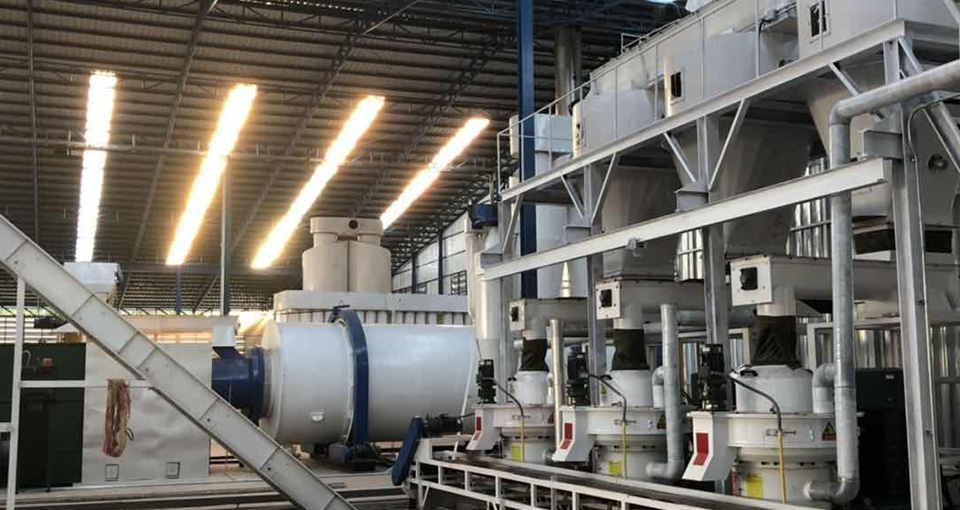
Myanmar, known as the "last frontier of Asia", not only has rich cultural heritage and natural resources, but also has great potential in the field of renewable energy, especially the biomass pellet market. For investors and traders seeking sustainable development, Myanmar is gradually becoming a key link in the biomass energy map of Southeast Asia.

1. Resource endowment: a treasure trove of raw materials
Rice husk dominance: As one of the world's major rice producers, Myanmar's rice milling industry alone produces more than 3.8 million tons of rice husks each year, with a calorific value of 3,000-3,500 kcal/kg, which can meet the annual raw material needs of at least 50 medium-sized pellet plants.
Diversified raw material matrix: Sugarcane bagasse (annual output of 3.4 million tons), corn cobs, palm fruit bunches, and wood waste (30 million cubic meters, from forestry and rubber plantations) form a supplementary resource pool, and 80% have not yet been used on a large scale.
| Raw Material Type | Annual production estimate | Main production area |
| Rice Husk | Annual production estimate | Ayeyarwady Region, Yangon Region |
| Sugarcane Bagasse | 3.4 million tons | Shan State, Kachin State |
| Wood Processing Waste | 30 million cubic meters | Kayah State, Chin State |
| Palm Empty Fruit Bunches | 30 million cubic meters | Taninthayi Region |
2. Policy dividends: the strategic fulcrum of national energy transformation
(1). Strong promotion by top-level design
The Ministry of Energy of Myanmar lists biomass energy as the core direction of renewable energy, and clearly provides preferential treatment such as equipment import tariff exemption and corporate income tax "five exemptions and five reductions".
Project approval has been greatly simplified. Great Wall International said: "If approved today, construction can start tomorrow", and the construction period of a 120MW power plant only takes 1.5 years.
(2). International cooperation injects momentum
The Liangdong 200kW gasification power station and the Jinshan Cement Plant 20.7MW rice husk power station (annual emission reduction of 96,000 tons of CO₂) jointly invested and built by China and Myanmar set a benchmark, and China's technical standards were officially recognized by Myanmar.
Exporting companies enjoy ASEAN tariff exemptions with FORM E certificates of origin, and their cost competitiveness has been significantly improved
| Policy type | Specific measures | Benefits to investors |
| Financial incentives | Equipment import tariff reduction | Reduce initial investment costs by 15%-20% |
| Tax incentives | Corporate income tax "five exemptions and five reductions" | Zero income tax in the first five years of operation |
| Simplified approval | Fast track for biomass projects | Fast track for biomass projects |
| International agreements | ASEAN FORM E tariff reduction | Export costs to Thailand and Vietnam reduced by 8%-12% |
3. Market demand: from power gap to 100 billion-level application scenarios
(1). Energy crisis gives rise to core demand
The national biomass power generation installed capacity is only 50MW (2020), less than 2% of the total installed capacity, and the potential installed capacity exceeds 2000MW.
The industrial electricity gap is huge. After Jinshan Cement Plant adopts a 20.7MW biomass power station, it has completely gotten rid of the power grid power restriction problem.
(2). Diversified markets continue to explode
Industrial fuel substitution: cement plants (such as Magway Province projects), rice mills and other rigid demand industries, the cost of pellet fuel is only 110 Myanmar Kyats/kWh, which is 40% lower than diesel.
Clean living energy: The World Bank report pointed out that 84% of rural households rely on traditional firewood, and the market capacity of upgraded pellet fuel stoves has reached 2 million units/year.
Export incremental market: Thailand and Vietnam promised to increase the proportion of biomass power generation to 25% by 2030, and Myanmar pellet exports ushered in an explosion window
4. Application fields: Circular economy revolution beyond energy
(1). Power generation
Rice husk gasification power generation technology (such as Liangdong project) achieves dual output of "power generation + biochar", and farmers' income increases by 30%.
(2). Industrial heat
Palm oil mills and sugar mills use their own waste to make pellets, and steam costs are reduced by 50%.
(3). Derivative high-value products
Environmentally friendly charcoal blocks: The garbage charcoal project has been connected to cement plants, with a premium of US$200/ton.
Bio-based materials: Pellets are deeply processed into activated carbon and organic fertilizer, and the added value is increased by 3-5 times.
5. Future Prospects: Huge Potential and Expected Growth
Based on the growth trends of the global and Southeast Asian markets, the biomass pellet market is expected to continue to expand at an average annual compound growth rate of about 10.2% from 2025 to 2029. The Myanmar biomass pellet market is on the eve of an explosion. Its rich resource reserves and urgent energy needs are intertwined, forming a promising blue ocean. With its resource endowment and location advantages, Myanmar is expected to become an important biomass pellet production and export base in Southeast Asia by 2030.
Conclusion: Three action guides to seize the Myanmar biomass pellet market
Myanmar is at the critical point of green energy economic transformation:
Policy window period: 2025-2030 is the golden period of subsidies, and early layout will enjoy tax dividends;
Resource positioning war: Sign a 10-year exclusive waste agreement with the main rice producing areas (Ayeyarwady Province and Sagaing Province);
Technology grafting: Introduce China's Bolida&Rotexmaster mature biomass pellet production line equipment, with a production cycle of less than 8 months.
Investment is not only about entering an industry, but also about participating in writing Myanmar's energy independence story. When you convert waste rice husks into electricity to illuminate the village and sugarcane bagasse into a source of power for factory operation, the numbers on the income statement will grow in sync with community development and environmental restoration-this is Myanmar's answer to the biomass pellet industry.
Why do pellet machines use three-phase asynchronous motors at the current technological level
Analysis of the market prospects of biomass pellets in Cambodia
 20t/h Wood Pellet Production Line in Indonesia
20t/h Wood Pellet Production Line in Indonesia
Country: Indonesia
Capacity: 20t/h
Raw Material: subtropical trees
 10t/h Wood Pellet Production Line in Malaysia
10t/h Wood Pellet Production Line in Malaysia
Country: Malaysia
Capacity: 10t/h
Raw Material: wood log (acacia wood, eucalyptus wood)
 10t/h Wood Pellet Production Line in Philippines
10t/h Wood Pellet Production Line in Philippines
Country: Philippines
Capacity: 10t/h
Raw Material: wood log
 6t/h Wood Pellet Production Line in Thailand
6t/h Wood Pellet Production Line in Thailand
Country: Thailand
Capacity: 6t/h
Raw Material: wood log